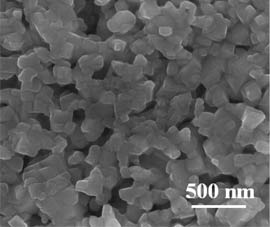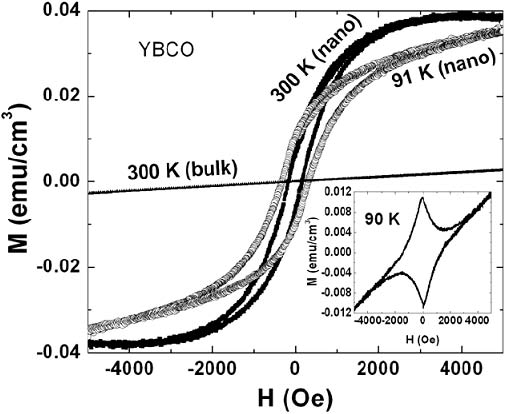All nanoparticles are magnetic?
According to new results published by the team of researchers in India, ferromagnetism may be a common property in all types of nanoparticles. Chintamani Rao and colleagues at the Jawaharlal Nehru Advanced Science Research Center, Bangalore, India, discovered that

YBaCuO nanoparticles range in size from 100-200 nm with magnetism.
Metal oxides and nitride compounds in nanometer sizes all represent ferromagnetism at room temperature due to surface effects.
The team also found an amazing result that even with nanoparticles of high-temperature superconductors can become ferromagnetic because superconductivity and ferromagnetism are often known not to go together.
"We have shown that, regardless of whether an oxide or other inorganic material is magnetic in nature, they can still exhibit hysteresis (iron-only properties). at room temperature (as nanoparticles) thanks to the surface effect, " Rao told Nanotechweb.org. "The same property is even achieved with superconducting materials in a state that is not superconducting."
Rao and his colleagues decided to study the magnetic properties of nanoparticles by a discovery created in their lab that nanoparticles of many non-magnetic oxides, including Ce 2 O, Al 2 O 3 . . all appear late at room temperature. The origin of magnetism in these nanoparticles is thought to come from magnetic moments that arise from empty oxygen nodes on the surface of the particle (CNR Rao is one of the world's leading magnetic physicists now. lead the research team in Bangalore).

Figure 1. Hysteresis curve of superconducting YBaCuO nanoparticles at room temperature and 91 K
(represents ferromagnetism), and when in its cubic state it is paramagnetic at room temperature.
The small figure shows that when at 90 K, it is inverse from superconductivity (Sol. Stat. Comm).
In the new study, the team made oxide nanoparticles with different sizes from 2 to 150 nm and burned them at different temperatures. The hysteresis effect was measured by vibrating sample magnetometer and the results clearly showed that the nanoparticles of small size at room temperature were surface magnetically.
The team also found that the nanoparticles of superconducting YBaCuO oxygen also exhibited ferromagnetism at room temperature. According to scientists, magnetism is " imprisoned " at the surface of nanoparticles due to YBaCuO block material is paramagnetic. "It is also interesting to say that even the nanoparticles of BaTiO3 iron (Barium titanate) also generate iron from the surface," Rao said.

Figure 2. Ferromagnetic properties (hysteresis curve) in nanoparticles of NbN compound (Sol. Stat. Comm).
Nanoparticles of metal nitride compounds (eg NbN) or metal chalcogenides (eg CdSe) also exhibit iron properties from the surface. Currently, the group is continuing the experiment to understand the nature of iron properties from the surface by the techniques of spectrum analysis and local detectors. These results are about to be published in Solid State Communications 12 685.
- The method of making nanoparticles of hard magnetic materials is simple
- Switzerland created the technology to kill potholes
- Bone regeneration with magnetic nanoparticles
- Sensor manufacturing helps detect nanoparticles in the air
- Successful fabrication of nanoparticles carries many types of cancer drugs
- Produces the world's smallest 'four wheel' nanoparticles
- Ultra-fast pollutant detector
- Nanoparticles help create more food but reduce water and energy consumption
- 100 years from now, Earth's magnetic field will reverse
- Nanoparticles kill cancer cells by ... punching
- Nanoparticles provide 3 drugs at the same time
- Treatment of diabetes by injection of nanoparticles
 Daily use inventions come from universities
Daily use inventions come from universities Special weight loss device helps prevent appetite
Special weight loss device helps prevent appetite 8 inventors were killed by their own inventions
8 inventors were killed by their own inventions Iran invented a motor car powered by water
Iran invented a motor car powered by water